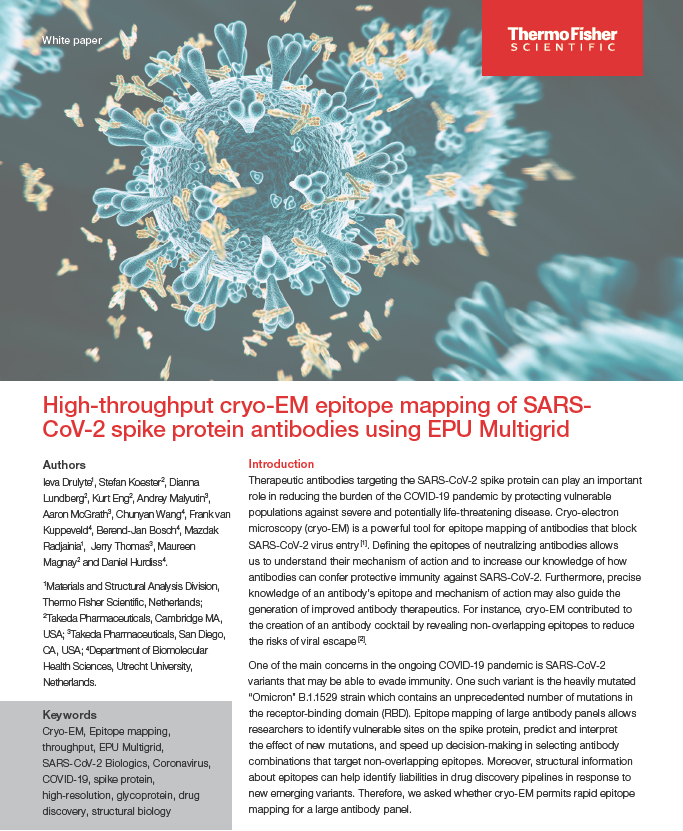
A thread on how we determined 12 sub-3 Å spike-Fab #cryoEM structures from a single microscopy session❗️ Using #EPUMultigrid, we performed high-throughput epitope mapping for a panel of neutralising antibodies targeting the #SARSCoV2 spike protein 🧵
thermofisher.box.com/s/a8mws76g5ew8…
thermofisher.box.com/s/a8mws76g5ew8…

The inspiration for this project came from our previous observation that the 6P-stabilised #SARSCoV2 spike (@McLellan_Lab) could produce ~3 Å structures from less than 2 hours of data collection👇
https://twitter.com/DanielHurdiss/status/1372659832780623872?s=20
Over the last two years, through trial and error and searching the literature, we perfected the recipe for reproducible spike-Fab complexes: 24 μM 6P spike + 150 μM Fab + 0.01% fluorinated octyl maltoside (added just before plunging). 🧑🍳
Each complex was prepared in duplicate and screened on Glacios, and the best 12 grids were imaged on Krios G4 (E-CFEG, Selectris X, Falcon 4) over a single unattended 48-hour EPU Multigrid session. As shown in the white paper, this protocol worked for all the Fabs we analysed. 

We used @cryosparc to rapidly process the data, using the local refinement to resolve the epitope-paratope region of the complexes. Despite the flexible nature of many of the epitopes, we were able to achieve resolutions permitting atomic modelling for all twelve complexes. 

Epitope mapping of large antibody panels allows researchers to identify vulnerable sites on the spike protein, predict and interpret the effect of new mutations, and speed up decision-making in selecting antibody combinations that target non-overlapping epitopes.
From a general perspective, our results show the significant advances that have been made in the speed, quality, and automation of cryo-EM data collection. What is more, EPU Multigrid allows to bring down the costs per structure, i.e. “twelve for the price of one” 💰
We believe that cryo-EM’s high-resolution revolution will soon be followed by a high-throughput revolution, which will extend the range of cryo-EM applications to include fragment-based drug discovery and epitope mapping of large antibody panels.
So how can we improve on these results? Here are a few thoughts:
1. Find the minimum number of particles required per structure to reduce data collection time further.
2. Increase throughput (i.e. faster detector).
3. Add two Fabs per spike (with non-overlapping epitopes).
1. Find the minimum number of particles required per structure to reduce data collection time further.
2. Increase throughput (i.e. faster detector).
3. Add two Fabs per spike (with non-overlapping epitopes).
It would also be interesting to see how these results compare to a 200 kV system. Perhaps that’s something to consider once I’ve recovered from this project 😅
A huge thank you to my @UniUtrecht, @TakedaPharma and @thermosciEMSpec collaborators (a special thanks to my better half @IevaDrulyte), and @IHIEurope's #CAREvsCOVID project for making this work possible. Stay tuned for the detailed publication!
• • •
Missing some Tweet in this thread? You can try to
force a refresh





